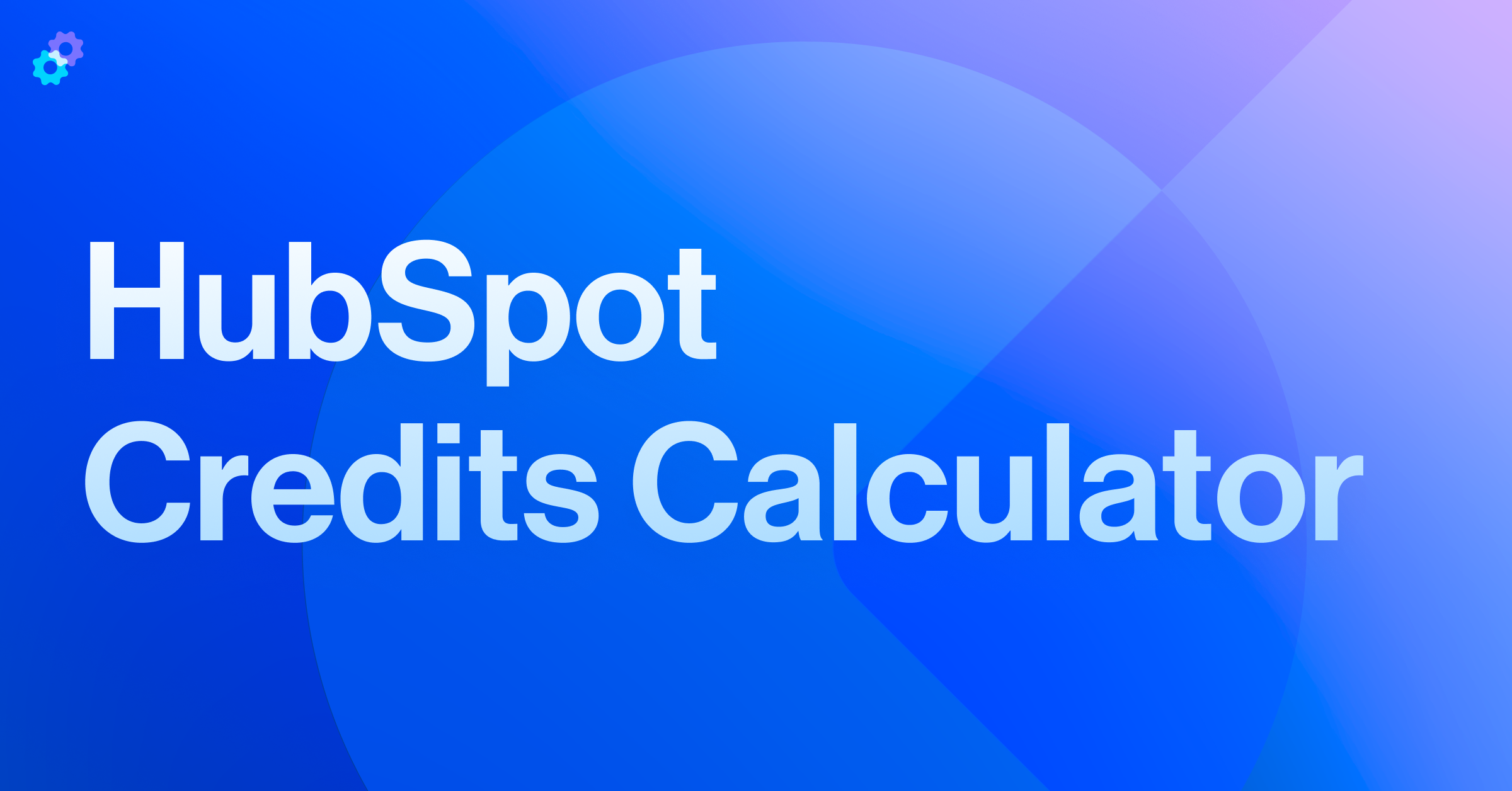For go-to-market teams that are using HubSpot and Salesforce simultaneously, integrating the two platforms can dramatically improve alignment between sales and marketing. A properly configured HubSpot <> Salesforce integration provides more consistent CRM data, accurate reporting, and streamlined processes that drive revenue.
However, syncing two complex and very different systems is never simple. When installing the HubSpot-Salesforce integration, sync problems can often occur, which can disrupt data integrity, delay lead follow-up, and create frustration across teams. This guide walks through some of the most common sync issues we encounter and provides actionable solutions to keep your integration running smoothly.
Why HubSpot–Salesforce Sync Issues Happen
While there may be many reasons why sync errors occur, many stem from differences in how HubSpot and Salesforce structure data. Some of the most common causes we see for sync errors include:
- Platform architecture and data models: HubSpot treats all contacts as single records, while Salesforce separates leads and contacts into separate records. Leads do exist in HubSpot, but they work very differently.
- Field mapping misalignment: Fields may have incompatible property types, missing values, or incorrect mappings.
- User permissions or API limitations: Integration users may lack access to critical fields or objects.
- Inconsistent process ownership: Different teams may update records differently, causing conflicts and inconsistencies among your crm data.
- Staffing changes: Records assigned to users who leave the company can fail to sync properly, especially without a proper process in place for managing deactivated users.
- Data gaps: Missing or incorrect data can trigger sync errors and inconsistencies. Failure to clean your data before setting up the sync can lead to data integrity issues across both systems.
Understanding these root causes is the first step in preventing sync failures and ensuring your Salesforce–HubSpot integration remains accurate and reliable.
Common Sync Issues and How to Fix Them
1. Duplicate Records
Duplicate records often arise from differing duplicate rules in HubSpot and Salesforce, manual record creation, or bulk imports. HubSpot deduplicates contacts based on email addresses and allows multiple emails per contact, while Salesforce only allows one email per contact or lead. Companies/accounts can be even trickier, as HubSpot often creates new company records automatically, while Salesforce manages accounts separately.
Impact: Duplicate records waste time, create confusion, and result in data gaps in your crm. Multiple versions of the same record can also trigger automation errors and skew reporting.
Solution: Align duplicate management rules across both platforms and perform a deduplication process before syncing. For contacts, set Salesforce to deduplicate on email addresses only and avoid creating multiple emails per contact in HubSpot. For companies/accounts, disable HubSpot autocreate and create new records in Salesforce as leads. Ensure deals and opportunities are only created in one system, usually Salesforce, as HubSpot does not deduplicate deals.
2. Field Mapping Conflicts
Field mapping conflicts occur when corresponding properties in HubSpot and Salesforce don’t align. This can happen when picklist values don’t align across both platforms, when fields are different property types, or when fields are simply not properly mapped.
Impact:
Incorrect or missing mappings can result in missing or inconsistent data. This affects sales visibility, reporting accuracy, and potentially causes teams to make decisions based on incomplete or outdated information.
Solution:
Audit all properties and align property types and values before syncing. Set up custom property mapping for important fields and document overwrite rules in your integration settings to prevent accidental data loss.
3. Permission & Visibility Issues
These issues happen when the integration user lacks access to certain fields or objects in Salesforce, or HubSpot users don’t have permission to edit synced records.
Impact:
Sync failures occur, and updates may only partially apply, leading to gaps in data or missing lead activity. Lead Source or Lifecycle Stage may not update correctly, impacting sales and marketing workflows.
Solution:
Use the HubSpot Integration Permissions Set for a dedicated integration user or assign a Salesforce System Administrator profile. Ensure that all fields being synced, such as Task Type for HubSpot Activities, are visible and editable by the integration user.
4. Workflow & Automation Conflicts
Conflicts occur when HubSpot workflows and Salesforce process builders/flows attempt to update the same record simultaneously.
Impact:
Data can “flip-flop” between values or trigger loops, creating errors and inconsistencies in your CRM. This can disrupt automated lead nurturing, create duplicate notifications, and reduce confidence in system reliability.
Solution:
Document automation rules in both platforms and designate a “source of truth” for each field. Consider one-way syncing or staggered updates for critical fields to prevent conflicting updates.
5. Picklist Value Mismatches
Picklist mismatches happen when values in Salesforce do not match HubSpot property values. For example, a deal stage may exist in HubSpot but not in Salesforce.
Impact:
Records may fail to sync, causing incomplete updates and errors. Marketing campaigns or reports relying on these values may fail, and sales teams may receive inaccurate pipeline data.
Solution:
Regularly align property values and review picklist changes before deployment. Consider setting Salesforce picklists to “unrestricted” to allow HubSpot to add values via API. HubSpot will also notify you when values are missing so they can be added quickly.
6. Lead vs Contact Conversion Issues
This occurs when a Salesforce lead converts to a contact that already exists in HubSpot, often due to duplicate emails or misaligned lifecycle stages.
Impact:
Leads can appear “stuck” in the funnel, disappear from reporting, or create duplicate contacts. These issues delay follow-ups, reduce pipeline visibility, and can negatively affect campaign tracking.
Solution:
Deduplicate based on email addresses and prevent Salesforce from creating a new contact if one exists in HubSpot. Carefully map lifecycle stages and lead statuses, and configure sync rules to properly handle conversion events without creating duplicates.
7. Deactivated Salesforce User Errors
Records owned by inactive Salesforce users cannot sync with HubSpot. This usually happens when an employee leaves and record ownership isn’t reassigned.
Impact:
Sync failures prevent records from updating, leading to incomplete data, workflow errors, and potential gaps in reporting. This can block critical automation and create frustration for sales and marketing teams.
Solution:
Establish a process for reassigning records to active users or a designated admin/operations account whenever staff leave. Regularly review ownership to prevent this problem proactively.
How to Prevent Future Sync Issues
Preventing sync issues between HubSpot and Salesforce requires proactive governance and clear processes to be in place. Here are a few steps that your team can take to mitigate future sync issues and maintain a healthy HubSpot–Salesforce integration:
- Document a field mapping guide for both systems to ensure everyone understands where data lives.
- Establish data governance policies, including naming conventions, required fields, and picklist rules.
- Define procedures for staffing changes, including reassignment of records from inactive users.
- Assign an integration owner or small RevOps team to oversee ongoing sync health.
- Test updates in a sandbox environment before deploying to production.
- Schedule regular sync health checks and cleanups to maintain accuracy over time.
When to Call in an Expert
Some more complex sync issues can require the help of seasoned RevOps professionals. Here are when you should consider contacting an expert:
- Complex multi-object integrations or workflows.
- Repeated sync failures are disrupting business processes.
- Custom development or API-level troubleshooting.
The team integration experts at Process Pro Consulting can audit your integration, resolve complex errors, and optimize workflows to ensure your HubSpot Salesforce sync runs reliably.
Sync issues between HubSpot and Salesforce are common but manageable. By understanding why problems occur and implementing solutions proactively, go-to-market teams can maintain clean data, accurate reporting, and smooth lead management.
Need help untangling your sync? Book a free consultation with the Pros.







